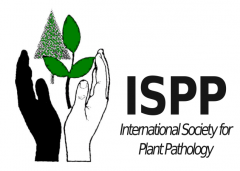FIRST REPORT OF BOTRYTIS spp AS A POSTHARVEST PATHOGEN OF STRAWBERRY IN PAKISTAN
M.W. Alam, M.L. Gleason, A.U. Malik, M. Amin, M. Fiaz, S. Ali, H. Rosli, A. Rehman
doi: 10.4454/jpp.v99i1.3797
Abstract:
Strawberry is an emerging fruit crop in Pakistan. In February 2015, a survey was conducted in strawberry fields of Lahore region of Punjab Province. Ripe fruits were harvested and stored at 1oC for 9 days. After storage, small, firm, light brown lesions were observed on fruits; the lesions enlarged quickly and became covered with grey masses of spores and mycelium. Isolations from symptomatic fruits were carried out on PDA plates. Colonies from single-spore cultures were initially hyaline, over time, turned grey to brown. Conidia were unicellular and obovoid to broadly ellipsoid (5.4 to 10.3 × 4.1 to 6.5) μm. Conidiophores were erect, subhyaline, and 15 to 33 μm long. After 17 days, dark, scattered and irregular-shaped sclerotia were observed. The fungus was tentatively identified as Botrytis cinerea (Ortuno et al., 2011). The ITS region of rDNA was amplified using primers ITS1/ITS4. Blast analysis (GenBank accession No. KX889115.1) showed 100% homology to the accession No. KF859918 of B. cinerea. For assessing pathogenicity, 30 mature strawberry fruits (cv. Chandler) were sprayed with a suspension of 105 spores/ml and incubated at room temperature (22oC). Ten control fruits received sterile water only. After 2 days of incubation, typical grey mold symptoms were observed on inoculated fruit except controls and same fungus used for inoculation was recovered. To our knowledge, this is the first report on B. cinerea as a postharvest pathogen of strawberry in Punjab, Pakistan. The disease may result in considerable economic losses to the emerging strawberry industry of Punjab.




